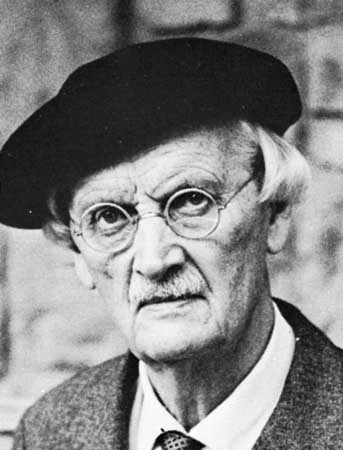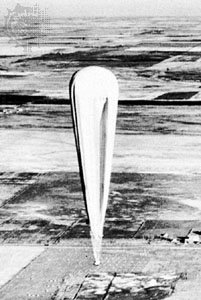Piccard, Auguste
Swiss-Belgian physicist
born Jan. 28, 1884, Basel, Switz.
died March 24, 1962, Lausanne
 Swiss-born Belgian physicist notable for his exploration of both the upper stratosphere and the depths of the sea in ships of his own design. In 1930 he built a balloon to study cosmic rays (cosmic ray). In 1932 he developed a new cabin design for balloon flights (balloon flight), and in the same year he ascended to 17,008 metres (55,800 feet). He completed a bathyscaphe in 1948 and later made several dives with his son Jacques.
Swiss-born Belgian physicist notable for his exploration of both the upper stratosphere and the depths of the sea in ships of his own design. In 1930 he built a balloon to study cosmic rays (cosmic ray). In 1932 he developed a new cabin design for balloon flights (balloon flight), and in the same year he ascended to 17,008 metres (55,800 feet). He completed a bathyscaphe in 1948 and later made several dives with his son Jacques.Piccard was born into a family of Swiss scholars. His father, Jules Piccard, was a professor of chemistry at the University of Basel. Auguste and his twin brother, Jean, enrolled together at the Swiss Federal Institute of Technology, in Zürich, where they studied physics and chemistry, respectively. When they became doctors of science, both decided to teach in universities; Jean, the chemist, went first to Munich, then to Lausanne, and then to the United States; and Auguste, the physicist, stayed on at the Institute. In 1920 Auguste married the daughter of a French historian at the Sorbonne (Universities of Paris I–XIII (Paris I–XIII, Universities of)).
 Piccard became interested in balloon ascents as a means of making experiments. He participated in many important research studies, and when the University of Brussels created a chair for applied physics in 1922, Piccard, who was also a mechanic and an engineer, readily accepted the post. Having studied cosmic rays, he conceived of an experiment for observing them at ascents above 16,000 metres (52,500 feet). Previous ascents had shown that the stratosphere could be fatal and that to penetrate the isothermal layer, with its low pressure, a revolutionary balloon would be necessary. He built such a balloon in 1930, with Belgian financing. Its main innovative feature was an airtight cabin, equipped with pressurized air; this technique later became commonplace on airplanes. Another innovation was the design of a very large balloon having sufficient ascent strength so that, on departure, it need not be completely filled (see photograph-->
Piccard became interested in balloon ascents as a means of making experiments. He participated in many important research studies, and when the University of Brussels created a chair for applied physics in 1922, Piccard, who was also a mechanic and an engineer, readily accepted the post. Having studied cosmic rays, he conceived of an experiment for observing them at ascents above 16,000 metres (52,500 feet). Previous ascents had shown that the stratosphere could be fatal and that to penetrate the isothermal layer, with its low pressure, a revolutionary balloon would be necessary. He built such a balloon in 1930, with Belgian financing. Its main innovative feature was an airtight cabin, equipped with pressurized air; this technique later became commonplace on airplanes. Another innovation was the design of a very large balloon having sufficient ascent strength so that, on departure, it need not be completely filled (see photograph--> ). On May 27, 1931, Piccard and Paul Kipfer reached an altitude of 15,781 metres (51,775 feet), where the atmospheric pressure is about one-tenth that at sea level. Upon returning to the surface, the scientist-adventurers were received triumphantly in Zürich and then Brussels.
). On May 27, 1931, Piccard and Paul Kipfer reached an altitude of 15,781 metres (51,775 feet), where the atmospheric pressure is about one-tenth that at sea level. Upon returning to the surface, the scientist-adventurers were received triumphantly in Zürich and then Brussels.In 1932, in a new cabin equipped with a radio, Piccard was able to reach an altitude of 17,008 metres (55,800 feet). The following year, using the same technique but with bigger balloons, other balloonists rose to 18,501 metres (about 60,700 feet) in the Soviet Union and 18,592 metres (about 61,000 feet) in the United States.
As a child, Piccard had been fascinated by accounts of marine fish and thought that man should also descend into the depths. Now, after his aeronautical successes, he wanted to build a device capable of resisting the pressures of the ocean depths, the bathyscaphe.
Depth-resistant cabins are, of necessity, heavier than water. Before Piccard, they had been suspended from a cable, but at great depths this procedure was not dependable. Piccard revolutionized the dive by the principle of the balloon. Just as a lighter-than-air balloon carried the nacelle, or balloon gondola, a lighter-than-water float would support the cabin. And just as the balloon required a release of ballast to rise, the bathyscaphe would release weight in order to ascend after having completed its dive. Air, because it is too easily compressed, was not used in the floats; Piccard chose heptane (a petroleum derivative).
World War II interrupted the construction of the bathyscaphe, which was not completed until 1948. On Oct. 26, 1948, an unpiloted trial dive with the bathyscaphe was conducted successfully in shallow waters of 24 metres (80 feet). On Nov. 3, 1948, in a deeper dive of approximately 1,400 metres (4,600 feet), the cabin withstood the pressure perfectly, but the float was severely damaged by a heavy swell of water that it encountered after the dive. The bathyscaphe project was subsequently troubled by various difficulties until Jacques Piccard (Piccard, Jacques), Auguste's son, intervened.
Jacques, an assistant in the economics department at the University of Geneva, had already conducted the negotiations with the French government. Then, while in Trieste for the purpose of preparing a study of that port, he received an unexpected offer from that city's local industry to build a new bathyscaphe. Thus, in August 1953, two bathyscaphes competed in the Mediterranean, at Toulon, France, and near Naples, Italy. The French-based craft descended to about 2,100 metres (6,900 feet), and the Italian-based craft went down to about 3,150 metres (10,300 feet). At the age of 69, Auguste Piccard had realized his dream. His son, abandoning economics, followed in his father's footsteps and collaborated in future work with bathyscaphes. In 1954 Piccard retired from teaching and left Brussels for Switzerland. His grandson Bernard Piccard made the first round-the-world balloon flight in 1999.
Additional Reading
French works include Pierre de Latil and Jean Rivoire, Le Professeur Auguste Piccard (1962), and A la recherche du monde marin (1954; Man and the Underwater World, 1956), which deals with the explorations undertaken by Auguste and Jacques Piccard. English translations of Auguste Piccard's writings are Earth, Sky and Sea and In Balloon and Bathyscaphe (both 1956).
- Giuliani, Rudolph W.
- Giuliano de', Duc De Nemours Medici
- Giuliano de' Medici, Duc De Nemours
- Giulietta Masina
- Giulini, Carlo Maria
- Giulio Alberoni
- Giulio Aleni
- Giulio Andreotti
- Giulio Bizzozero
- Giulio Caccini
- Giulio Campagnola
- Giulio Campi
- Giulio Clovio
- Giulio Douhet
- Giulio Natta
- Giulio Romano
- Giunta Pisano
- Giurgiu
- Giuseppe Arcimboldo
- Giuseppe Campani
- Giuseppe Farina
- Giuseppe Ferrari
- Giuseppe Fiorelli
- Giuseppe Garibaldi
- Giuseppe Giacosa